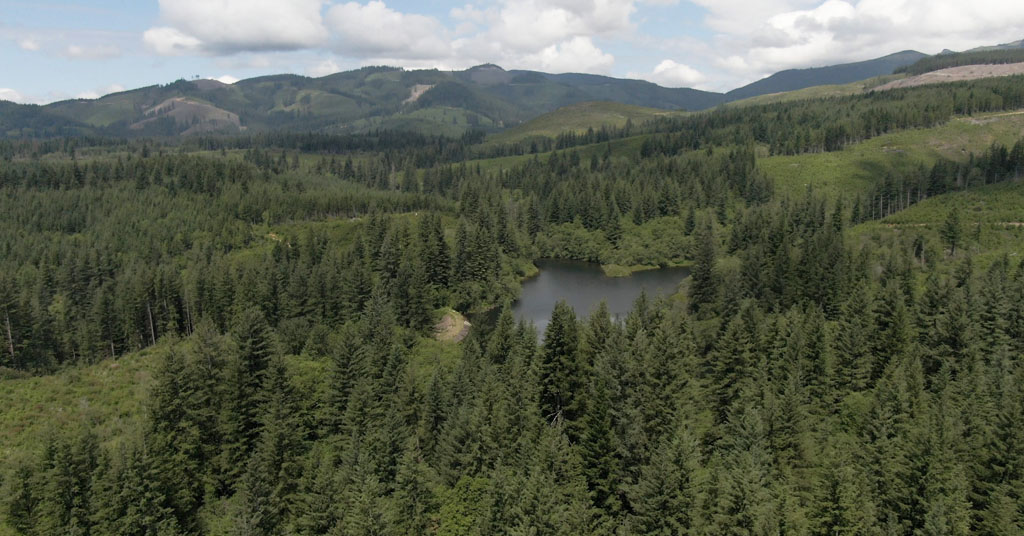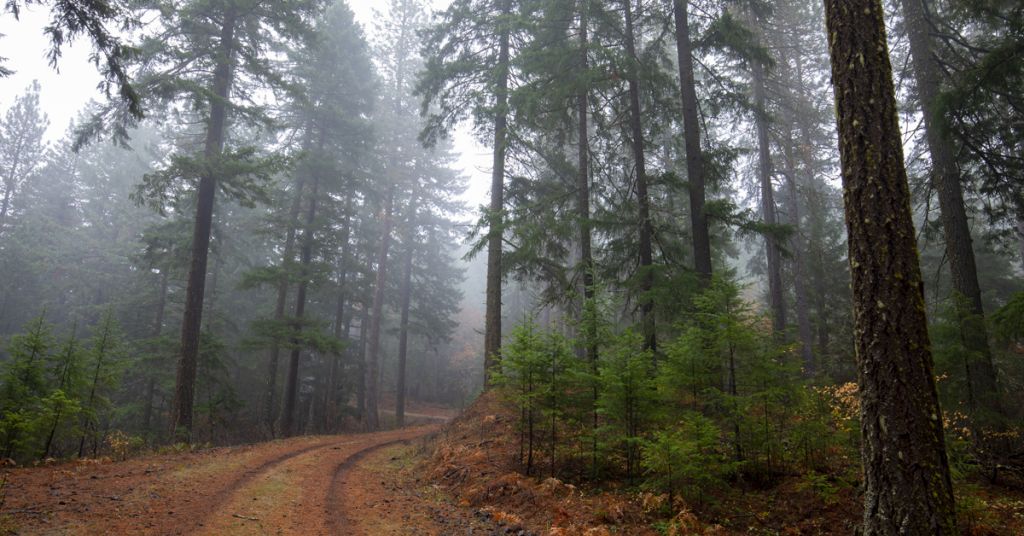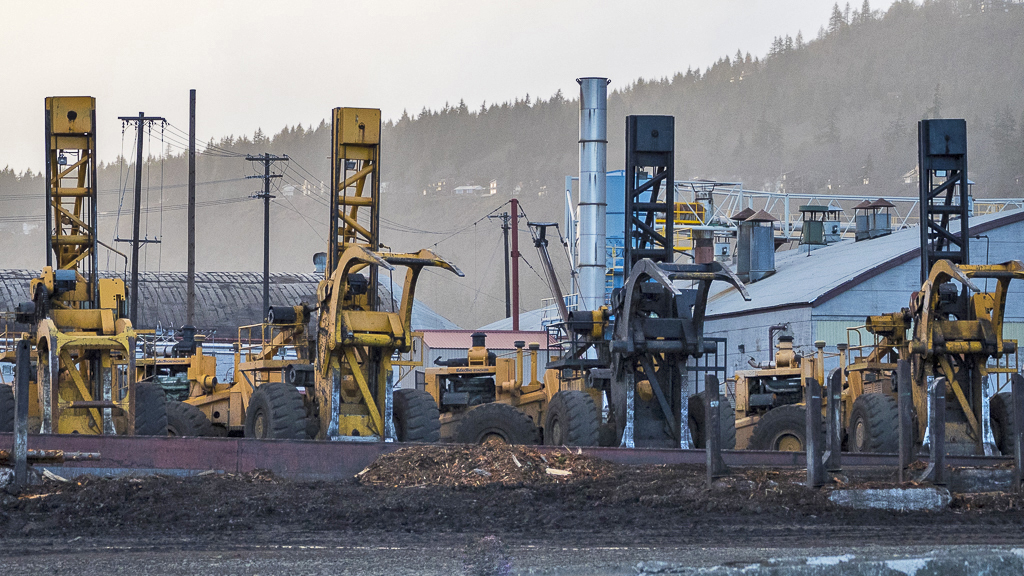Every spring brings the chance to gaze at a wildflower meadow and allow a feeling of peace and optimism to wash over the soul. From the bright yellow of balsam root and scotch broom in the freeway medians to purple lupine and those things in irrigation ditches, everything shouts joy and zest. Weekend drives in the country and hikes in the Gorge become ecstatic experiences.
But many of these striking blooms are not native. And unlike the jingoism sweeping through human politics, in the case of invasive plants it’s appropriate to try to stop them in their tracks. It behooves us all to know the difference between a newcomer greedily hoovering up all the available resources and a native plant that has established itself in a particular place without human action. In fact, our awareness of the difference could be what preserves our region’s unique beauty and bounty.
But humans have been moving plants around on most continents for thousands of years. No ecosystem is entirely pristine.
What difference could a few more transplants possibly make any more?
The answer is really simple. Take the Gorge, for example. We do want to preserve its unique character, which is equivalent to its biodiversity. Biodiversity is an interdependent network of animals, invertebrates, water and nutrients that have co-evolved over eons. Introduced species usually have unintended effects on that balance. They can exacerbate erosion and suck up far more water than the natives. Often when placed in a new environment, a seemingly innocuous plant goes ‘viral,’ elbowing its neighbors out of the way, stressing the other organisms in the network.
Non-native plants are more than mere weeds. They’re often called ‘noxious’ — generally defined as highly destructive, invasive, and difficult to control by chemical or physical means. Some are poisonous. Noxious weeds are enthusiastic colonizers of disturbed ground, prolific seed producers, highly adaptable to different conditions, and fast growers, according to Noxious Weeds in the Interior Columbia Basin and Portions of the Klamath and Great Basin: Science Assessment of Selected Species.
By contrast, “A weed is a plant where you don’t want it to be” — not necessarily an invader, says Tania Siemens, who works with the Oregon Sea Grant Watershed and Invasive Species Education Program at Oregon State University. “Plenty of native species are weedy,” she adds. But native weeds don’t have the ecosystem and economic impacts of invasive species.
A 2014 Oregon Department of Agriculture study estimated that noxious weeds cost Oregon residents about $83.5 million in personal income and, left unchecked, could cause the loss of nearly 2,000 private sector jobs.
These losses are caused by factors like degradation of forest land by Scotch broom, preventing regrowth of desirable trees; supplanting of crop seeds in fields by invading noxious plants; and reduced forage for wildlife and livestock.
It’s harder to quantify recreational impacts, but one 1994 study found that leafy spurge (Euphorbia esula) reduced wildlife-related recreation expenditures in Montana, North Dakota, South Dakota, and Wyoming by $2.4 million annually. Much of this loss was likely related to the reduction of wildlife numbers owing to the loss of native forage plants after leafy spurge invaded. And in places where herbicides have been used to control leafy spurge (which also drive up costs), the herbicides also killed off the native forage plants, causing researchers to note that “the treatment can be worse than the disease.”
Now for the Worst Weeds of the Gorge.
- Bindweed
- Cheat grass
- Dalmatian toad flax
- English ivy
- Garlic mustard
Giant hogweed - Himalayan blackberry
- Italian Arum
- Knotweeds: giant, Japanese
- Knapweeds: meadow, Russian, spotted
- Kochia
- Leavy spurge
- Puncturevine or goathead
- Purple loosestrife
- Reed canary grass
- Rush skeleton weed
- Scotch broom
- Thistles: yellow star, bull, Canadian, musk
- Tansy ragwort
It’s no accident that noxious invasives are often pretty; about half of them are escapees from gardens, according to the Washington State Noxious Weed Control Board. Thus it’s important, while you’re indulging your landscaping fantasies, to learn about the bad actors before you plant, so you aren’t making the invasive problem worse. Scotch broom got here this way. So did purple loosestrife, English ivy, butterfly bush, yellow iris, and that aptly-named Paterson’s curse, which was probably introduced in wildflower mix in 2003. Speaking of which, it’s not a good idea to use any commercial wildflower mixes, as most have been found to contain noxious weeds.
Humans have a lot more to do with the influx of non-native species than just planting something (Scotch broom, English ivy) because it reminds one of the Old Country, or because we thought it would make good fodder for livestock (reed canarygrass). No, we are on the hook for a lot, because much of the time we’re oblivious to the consequences of our actions, such as hacking up undeveloped land into a housing tract. A disturbed landscape like this is a vulnerable landscape, says Marty Hudson of the Klickitat County Noxious Weed Control Board. Naturally occurring events like floods and wildfires can also disturb landscapes and invite invasion.
Hudson works with landowners, who are legally responsible for controlling noxious weeds on their property. “Often the weed is just a symptom of something else,” he says, such as a landowner’s failure to think through how his uses of the land will affect the ecosystem and actually make responsible care of the property more burdensome. Livestock ripping up the pasture, developers stripping the top layer of soil to lay out homesites — even people just spraying herbicide along their fence lines — this can create open season for the weeds,” he says. But instead of doling out fines, Hudson prefers to help landowners “develop a management change” on the land. (See tips below.)
In wilderness areas, even the most devoted tree-hugger can contribute to the spread of noxious weeds, which hitchhike on boat propellers, boots, pant cuffs, and in tents and tarps. To help control the problem, there are now 25 boot brushes installed at trailheads in the Gorge courtesy of the Columbia Gorge Cooperative Weed Management Area, a group of 17 land management organizations including the Oregon and Washington noxious weed control boards, the Yakima Nation, Hood River and Wasco Counties’ soil and water conservation districts, and the US Army Corps of Engineers.
Reading a list of invasives can be discouraging. “We are faced with the loss of what we consider to be our beautiful Oregon that we cherish,” says Siemens. But, she adds, expanding public awareness and an increasing number of official resources are pushing back at the large and growing inventory of invaders. “Everybody can make a difference and it’s not that hard,” she says.
Hudson is likewise optimistic. “This is my 25th year doing this and I feel like there’s a lot more awareness than there used to be,” he says. And his office is happy to provide Washington residents with a free packet of bee-friendly ‘noninvasive flower mix’ containing plants like sunflowers, coreopsis, lupine, crimson clover, partridge pea, and sage. These are also available from the Washington State Noxious Weed Control Board.
In the end it may be an educated citizenry that tips the balance between natives and invaders. The digital age makes identifying, locating, mapping, communicating about, and removing noxious weeds faster.
Here are some ways to pitch in:
- Learn to identify noxious weeds; check out the Oregon site http://www.oregon.gov/oda/plant/weeds and the Washington site http://www.nwcb.wa.gov/.
- If you see a plant you think might be invasive, take a picture and send it to: http://www.imapinvasives.org/. You can also report to the Oregon Invasives Hotline, 1-866-INVADER.
- Consider using herbicides selectively on non-native species rather than indiscriminately killing everything.
- Be aware that you may be carrying invasive plant seeds on your boots, clothing, boat and other gear. Boot brushes available at:
- East end of the Gorge: http://hoodriverswcd.org/cms/wp-content/uploads/2013/06/Projects_EBootBrushSites.jpg
- West end of the Gorge: http://hoodriverswcd.org/cms/wp-content/uploads/2013/06/ProjectsWBootBrushSites.jpg
- Don’t buy invasive ornamental plants. Investigate before you buy. Learn about the plants on your property.
- If you clear a plot of land for any reason and don’t re-landscape right away, plant a benign cover crop so invasive weeds have competition. When you re-plant, use native plants first, non-invasive non-natives second. The Oregon State University Extension Service can suggest substitutes for common ornamental invasives for uses like groundcover.
- Think about the difference between ‘weeds’ and ‘invasive species.’ Many weeds, such as dandelions, are actually food sources for native insects and animals.
- Volunteer to help control invasives in your area. And if you do start pulling plants, check to see if the ones you’re removing are toxic and if so, wear protective clothing.
















Great article! Now is the time for landowners to deal with puncturevine. It grows along roadways and other disturbed areas. It is omnipresent in Wasco County and has now invaded Hood River County. It has a major economic impact as it punctures bike tires and dogs’ paws – not fun for visitors or residents. Non-chemical control involves pulling up the mat-like plant, including its deep taproot. Herbicide treatment of glyphosate or 2,4-D right now while the plant is small can also nip this invasive, noxious weed in the bud. Don’t let it go to seed! If it does, clean up all of the mace-like seeds (goatheads)!
Thanks, Anne. I’ll pass that to Valerie. We’ll see if we can incorporate the info about puncturevine in some of the upcoming articles on hiking and biking.
Susan